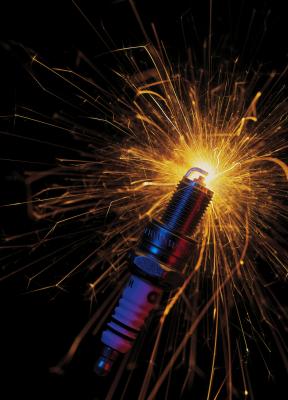
Modern spark plugs are more durable than most previous designs. Until recently, spark plugs rarely lasted beyond a few thousand miles, and chains of tune-up shops thrived by offering this vital service. Professional technicians and astute hobbyists inspect spark plugs to gauge engine and ignition system conditions. The appearance of the business end of any spark plug may often reveal a discrepancy in that particular cylinder. The clues proffered by the condition and wear pattern of the plug electrodes often help diagnose symptoms ranging from improper ignition timing to poor driving habits. Accurately reading your spark plugs can render more valuable information than tea leaves or palm readers have ever disclosed.
Normal wear of a spark plug is exhibited by some erosion of the center electrode. The square-cut shoulders of the electrode get rounded off, and the side, or ground, electrode may display some loss of material as well. The plug gap is widened by this normal loss of material, and engine performance and fuel economy suffer. Uniform wear on each plug may simply indicate needed maintenance, but pronounced wear of a single plug can signify a lean fuel mixture in that cylinder. A vacuum leak may be suspected in such cases. In instances where the center electrode wear pattern mimics the curve of the side electrode, material loss is obvious. This one-sided depletion is normally found in smaller engines, due to the heavier work loads that they experience.
A spark plug that is running too hot can wear unevenly and prematurely. Excess heat is shown by electrodes with erratic wear patterns that are free of ashes or other deposits. The white insulation of the electrode may even be blistered by the extreme heat load. Such conditions noted on all spark plugs can indicate overly advanced ignition timing or engine cooling system shortfalls. A single plug suffering this symptom may be due to a vacuum leak in that cylinder. A vacuum leak dilutes the fuel mixture with excessive air that increases internal temperatures and reduces the service lift of the spark plug. A plug with a cooler heat range may solve the problem, once proper ignition timing, fuel delivery and engine cooling is confirmed.
Engine spark knock, or "ping," can usually be heard from inside the passenger compartment of a vehicle. Each knock is actually a premature detonation in a combustion chamber. Spark knock can be caused by a defective emission control device, incorrect ignition timing, excessive engine loads and poor fuel quality. Spark plugs that are subjected to detonations often exhibit fractures in the electrode insulation. Not only does the ill-timed explosion damage the plug insulation, but pistons may be ruined by debris or concussion. The minor inconvenience of down-shifting appropriately or buying quality fuel pales in comparison to dealing with catastrophic engine failure.
Uneven erosion can be eliminated by modern spark plug designs that incorporate multiple ground electrodes or superior metal alloys. However, engine builders and racing enthusiasts practice the art of spark plug indexing to stem one-sided wear and to take full advantage of cylinder designs and ignition system abilities. The plugs are installed in the cylinder head before it is attached to the engine block. This allows positioning of the electrode gap for optimum combustion and uniform wear. The plugs are shimmed to secure the alignment, and the cylinder head is installed. Despite the expense of premium, high-performance spark plugs, they remain a viable alternative to such complex procedures. Modern car engines enjoy greatly extended service intervals, but modified, or otherwise finicky, engines can benefit from periodic plug inspections, cleanings and adjustments.